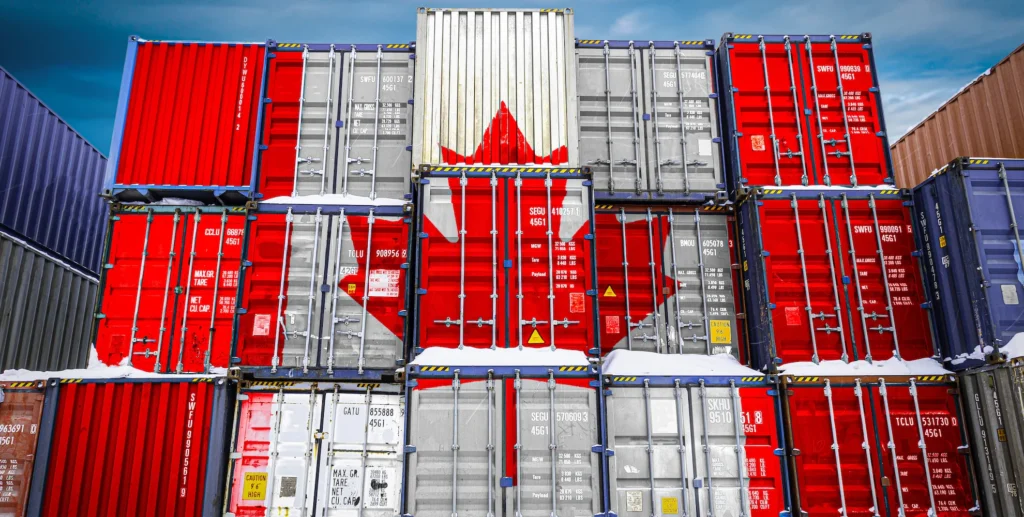Introduction: Canada’s trade crisis
Canada’s trade crisis due to the recent U.S. tariffs on steel and aluminum is creating uncertainty for businesses and industries reliant on trade. Federal Liberal leadership candidate Mark Carney has emphasized the urgency of the situation, calling for decisive action to protect Canada’s economy and minimize long-term damage. Speaking from Pro Metal Industries Ltd. in Regina, he highlighted the necessity of a robust domestic response while simultaneously strengthening global trade relations. As tensions rise, it is essential to explore strategies that can mitigate economic risks and ensure long-term stability for Canadian industries, businesses, and workers.
Strengthening Domestic Investment
Carney stressed the importance of investing within Canada to fortify the national economy. He advocated for unity, urging provinces to work together as “one Canadian economy, not 13 separate entities.” By supporting Canadian industries, businesses can reduce reliance on foreign markets and enhance economic resilience. This can be achieved through government-backed financial incentives, tax reductions for domestic manufacturers, and increased funding for technological advancements. Encouraging businesses to source materials locally and prioritize domestic suppliers can provide stability in uncertain economic conditions.
Additionally, Carney suggests that public-private partnerships should be fostered to ensure that key industries, such as steel and aluminum, remain competitive despite external challenges. Long-term investments in research and development, energy-efficient manufacturing, and sustainable business practices will also help Canadian industries weather economic turbulence.
Expanding Trade Partnerships
To counteract the impact of U.S. tariffs, Carney emphasized the need to develop trade relations with other countries. Diversifying trade partnerships will reduce dependency on the United States and open new opportunities for Canadian exports. Strengthening agreements with Europe, Asia, and South America can provide stability in an unpredictable global market, ensuring that Canada does not become overly reliant on any single trading partner.
By leveraging international trade deals such as the Comprehensive and Progressive Agreement for Trans-Pacific Partnership (CPTPP) and the Canada-European Union Comprehensive Economic and Trade Agreement (CETA), Canada can secure access to high-demand markets, boosting economic growth. The federal government must also work closely with industry leaders to identify new opportunities, ensuring that Canadian businesses remain competitive on a global scale.

Investing in Infrastructure
Infrastructure plays a crucial role in economic security, particularly in a trade-dependent nation like Canada. Carney underscored the importance of expanding pipeline projects to support Canada’s energy sector, enhancing rail and road networks to improve transportation efficiency, and modernizing ports for more seamless exports. Improved infrastructure can facilitate efficient trade, ensuring that Canadian resources reach international markets without restrictions imposed by U.S. policies.
In addition to traditional infrastructure, investments in digital connectivity are crucial for modernizing supply chains, improving communication between industries, and enhancing overall economic efficiency. Advanced technologies such as AI-driven logistics, blockchain for secure transactions, and automation in manufacturing can significantly reduce costs and increase Canada’s competitiveness in the global market.
Supporting Canadian Manufacturers
Businesses like Pro Metal Industries Ltd. have already taken steps to mitigate the impact of tariffs by prioritizing Canadian materials. Mark Brown, president of Pro Metal Industries Ltd., reaffirmed his company’s commitment to using Canadian steel, ensuring stability despite rising costs. Encouraging other businesses to adopt similar procurement strategies will strengthen the national economy.
To support manufacturers further, government programs should offer grants, low-interest loans, and tax credits for businesses that prioritize domestic production. Investing in workforce development programs to train skilled laborers will also be crucial for maintaining a competitive edge in the global economy.
Additionally, promoting innovation through research initiatives can help Canadian manufacturers adopt new technologies, reduce costs, and improve efficiency. With the right policies in place, local industries can withstand economic disruptions and continue to thrive despite external pressures.
Navigating Political Uncertainty
As the Liberal Party leadership race continues, Carney and his competitors, including Chrystia Freeland, Karina Gould, Frank Baylis, and Ruby Dhalla, are positioning themselves to address economic challenges. Recent polling suggests that Carney’s economic approach resonates with voters, putting him in direct competition with Conservative leader Pierre Poilievre. The outcome of the upcoming federal election may shape Canada’s trade policies for years to come.
Political decisions regarding trade, tariffs, and economic policies will have a long-lasting impact on Canada’s financial stability. Carney has suggested that negotiating from a position of strength will be critical in ensuring that Canada secures fair agreements with trading partners. Meanwhile, ensuring bipartisan cooperation on economic issues will provide continuity and stability regardless of election outcomes.
Conclusion
The U.S. tariffs on Canadian steel and aluminum have created significant economic challenges, but proactive strategies can help mitigate their impact. By strengthening domestic investment, expanding trade partnerships, investing in infrastructure, supporting local manufacturers, and navigating political uncertainties, Canada can take control of its economic future.
As the nation adapts to these challenges, collaboration between government, industry leaders, and businesses will be crucial. Long-term economic policies that focus on sustainability, technological advancement, and workforce development will ensure that Canada remains a global economic leader. The key to overcoming this crisis lies in unity, strategic policymaking, and a commitment to national economic growth. By taking decisive action today, Canada can build a more resilient economy for future generations.


